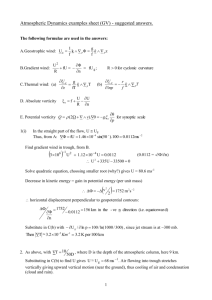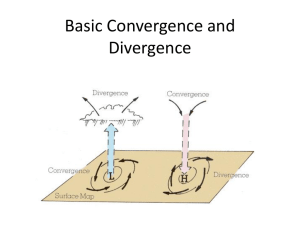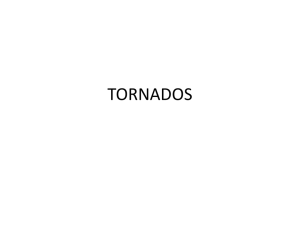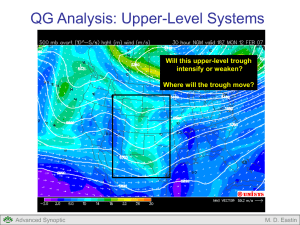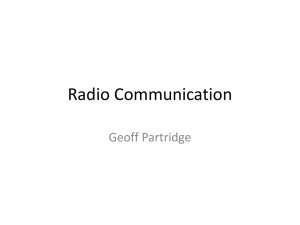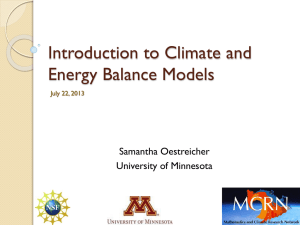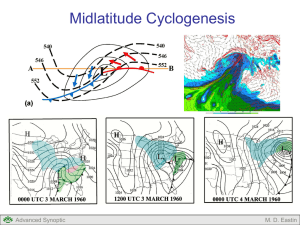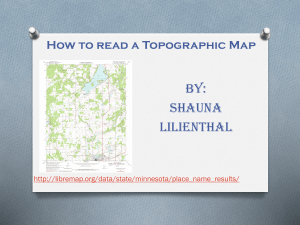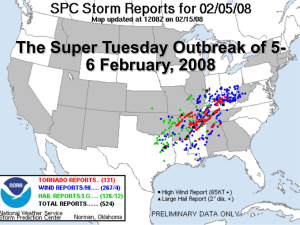The 500mb Chart and Shortwave vs. Longwave Troughs
advertisement
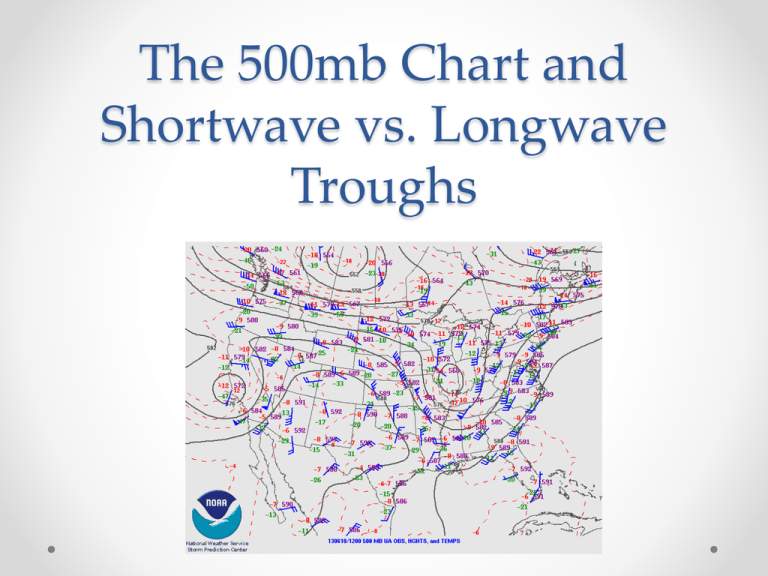
The 500mb Chart and Shortwave vs. Longwave Troughs Information on the Chart • Isoheights o Lines of constant height o Dark solid lines o Analogous to lines on a topographic map • Isotherms o Lines of constant temperature o Dashed red lines • Wind speed and direction o Blue barbs and flags • Dew Point o Green numbers Wind symbol convention Information on the Chart Wind information Isoheights Isotherms Dew point Uses • Starting point for making a forecast o See general patterns in the atmosphere • Identify troughs and ridges • Trough o Area of lower heights o As you go into the trough, heights decrease o Analogous to a valley on a topographic map • Ridge o Area of higher heights o As you go into the ridge, heights increase o Analogous to a mountain on a topographic map Troughs and Ridges Trough Ridge Trough Note height labels to determine if heights are increasing or decreasing Shortwave Trough vs. Longwave Trough • Longwave trough o Trough that has long wavelength o Only about 3-7 in the entire Northern Hemisphere at any given time o Move slowly • Shortwave trough o o o o Trough that has short wavelength Many exist at any given time Move quickly Can be stand alone, or embedded within longwave troughs or ridges • If embedded, look for little “kinks” in the isoheights Examples Longwave trough stretching over much of the U.S. Longwave troughs Shortwave trough over Ohio and Tennessee Valley, another entering southern California (and there are more) Longwave trough Shortwave trough SWT = shortwave trough Longwave trough SW T SWT SW T SWT Where are the shortwave and longwave troughs?

